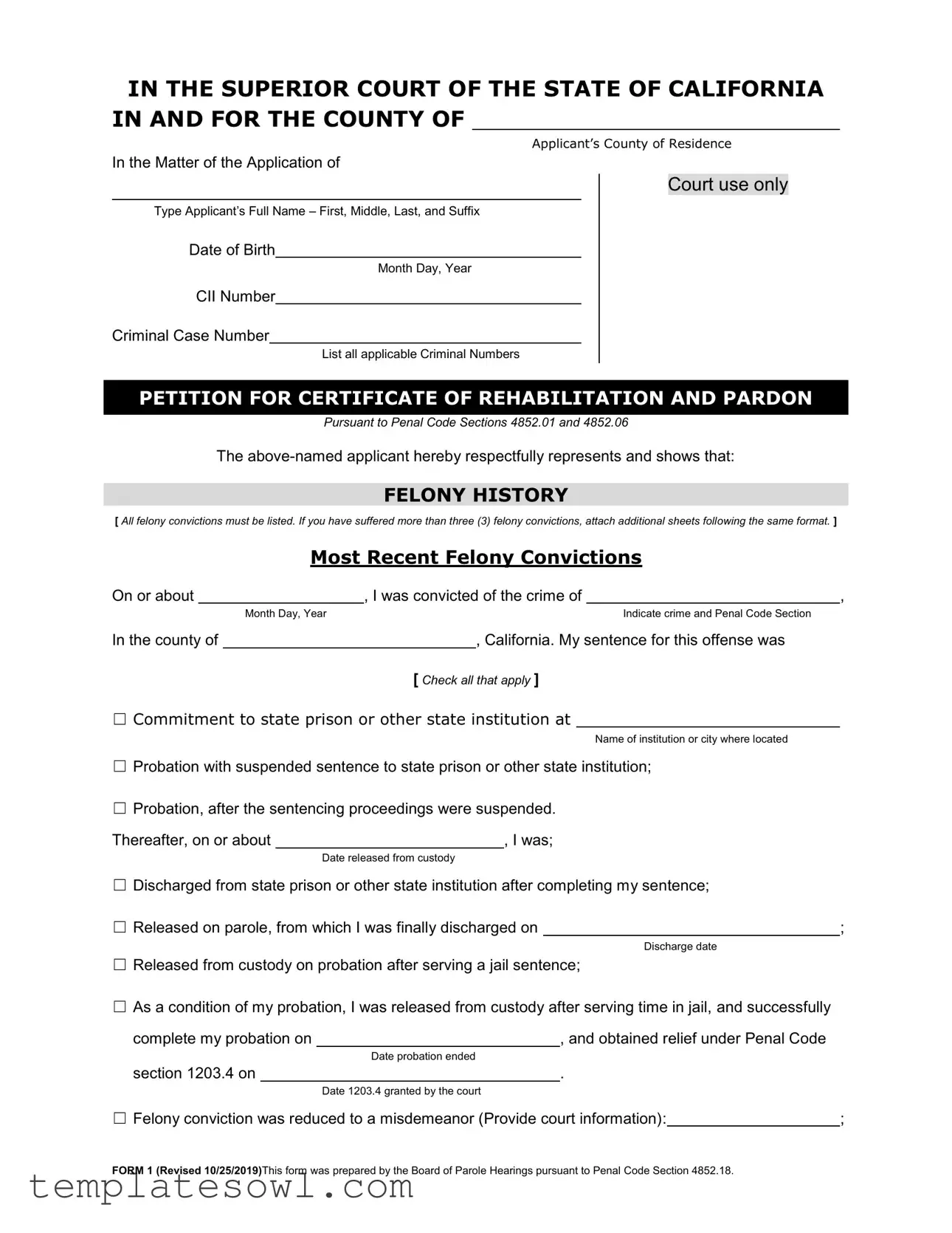1.Obtain Your Criminal Records
To complete this form, you will need information regarding each of your felony convictions, including the date of each conviction, the specific charge or charges for which you were convicted, the county of the conviction, and the sentence that was given. In addition, you will need to know the date that you were released from prison or jail and/or discharged from parole or probation.
This information may be obtained through the court in which the conviction(s) took place, or you may obtain a copy of your state criminal record through the California Department of Justice. You may only obtain your own records from the Department of Justice. Information regarding this request may
be obtained through the Office of the Attorney General website at https://oag.ca.gov/fingerprints/record-review. Regardless of the number of convictions, you will be filing only a single petition.
2.Confirm Your Eligibility
You are ineligible for a certificate of rehabilitation if any of the following are true:
You were convicted only of misdemeanors (other than sex offenses defined in Penal Code section 290, which were subsequently expunged) (Pen. Code, §4852.01, (b).)
You were convicted of specific sex crimes involving minor children as enumerated under Penal Code sections 286, subdivision (c), 288, 288a, subdivision (c), 288.5, and 289, subdivision (j). (Pen. Code, § 4852.01, (c).)
You are serving mandatory life parole. (Pen. Code, § 4852.01, (c).)
You were sent to state prison under a death sentence. (Pen. Code, § 4852.01, (c).)
You are currently in military service. (Pen. Code, § 4852.01, (c).)
Minimum Period of Rehabilitation
In order to be granted a certificate of rehabilitation you must satisfy a minimum period of rehabilitation. In every case, you must have resided continuously for five years in this state prior to filing the petition. (Pen. Code, § 4852.06) The period of rehabilitation begins to run upon your discharge from custody or upon release on parole or probation, whichever is sooner. (Pen. Code, § 4852.03, (a).) The period of rehabilitation shall constitute five years residence in this state, plus a period of time determined by the following rules:
An additional four years in the case of any person convicted of violating Section 187 (murder), 209 (aggravated kidnapping), 219 (derailing or wrecking a train), 4500 (assault with force likely to cause great bodily injury), or 12310 (use of explosives or destructive devices causing death, mayhem, or great bodily injury) of the Penal Code, or subdivision
(a)of Section 1672 of the Military and Veterans Code (acting or failing to act so as to cause another person’s death), or any other offense which carries a life sentence. (Pen. Code, § 4852.03, (a)(1).)
An additional five years in the case of any person convicted of any offense or attempted offense for which sex offender registration is required pursuant to Penal Code 290, except for convictions for violations of subdivision (b), (c), or (d) of Section 311.2 (possession or distribution of media depicting a minor engaging in sexual conduct), or of Section 311.3 (sexual exploitation of a child), 311.10 (advertising obscene matter depicting a minor engaging in sexual conduct), or 314 (indecent exposure). For those convictions, two years shall be added to the five years imposed by this section. (Pen. Code, § 4852.03, (a)(2).)




